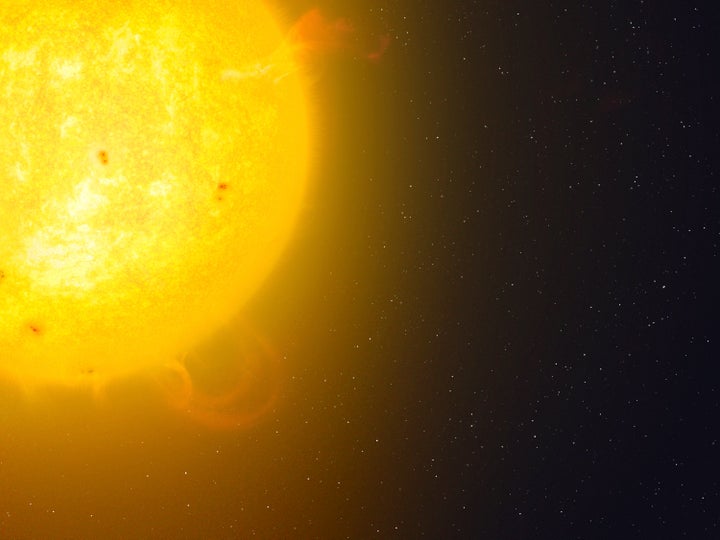
It turns out that big thing that hangs around in our sky every day is not all that it seems.
The sun (you know, the very object our entire solar system revolves around) might actually not be the colour that we’ve all been telling ourselves it is.
So stop using those yellow sun emojis – because the giant star literally lighting up our skies is green.
Yes, NASA scientist W Dean Pesnell told The Washington Post: “The sun would appear green if your eye could handle looking at it .
“Basically, when you look at the sun, it has enough of all the different colours in it and it’s so bright that everybody’s eyes are firing like crazy and saying ’It’s too bright for me to tell you what colour it is.′ That’s why the sun looks white to us.”
However, it can also appear yellow, orange or red because of interference from the Earth’s atmosphere.
And to be fair to humans, the sun is 93 million miles away from us – so perhaps it’s no surprise that we haven’t quite got the colour right.
It’s typically seen as yellow because of how the light is scattered, with air molecules interacting with the blue and violet wavelengths so only the yellow or red ones can reach our eyes.
For instance, sunset usually throws up a red or orange light because there is a thicker atmosphere so more molecules disrupt its wavelengths and change the colour again.
Contrary to our usual belief that blue equals cold and red equals hot, the scientist told the Washington Post that the hotter a star is, the more blue light it gives off, while cooler stars also appear red.
But the sun is somewhere in between these two extreme, which is why we “can’t perceive its colour,” according to Pesnell.
The sun offers us light and heat because it converts hydrogen into helium inside its core.
But, when it runs out of hydrogen gas and stops that reaction, the star will balloon, and go a deep shade of red – and then start eating the whole solar system, including us.
Then it will go bright blue for a time as its temperatures change dramatically before slowly dimming in colour in at least four billion to five billion more years.
For now though, Pesnell said the sun is “at its midlife,” and “still hasn’t dimmed out one bit”.
